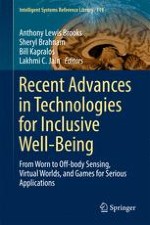2017 | OriginalPaper | Buchkapitel
6. Exergaming for Shoulder-Based Exercise and Rehabilitation
verfasst von : Alvaro Uribe-Quevedo, Bill Kapralos
Erschienen in: Recent Advances in Technologies for Inclusive Well-Being
Aktivieren Sie unsere intelligente Suche, um passende Fachinhalte oder Patente zu finden.
Wählen Sie Textabschnitte aus um mit Künstlicher Intelligenz passenden Patente zu finden. powered by
Markieren Sie Textabschnitte, um KI-gestützt weitere passende Inhalte zu finden. powered by
